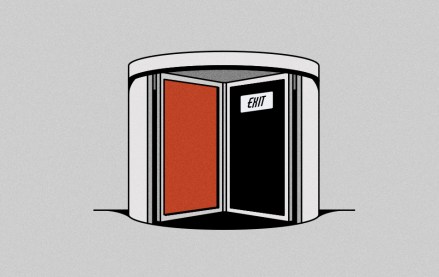Future of Marketing Briefing: AI didn’t break agencies – the talent drain did

This Future of Marketing Briefing covers the latest in marketing for Digiday+ members and is distributed over email every Friday at 10 a.m. ET. More from the series →
A senior marketer at a major WPP Media client told me recently they’re thinking about shopping around for a new agency. That, in itself, isn’t surprising, especially after WPP’s new CEO Cindy Rose, publicly admitted the company had “lost its way”. What stood out was why they’re considering the move. It’s not about chasing AI breakthroughs or assembling yet another full-stack planning and buying setup. It’s something more fundamental — and harder to fix: the people.
“They’re ultimately what matter to me as a client,” they continued. “If we put the account up for a review, that’s going to be part of our decision. We’re not big enough to get the best payment terms so we have to focus on where we get the best service.”
Because while AI and data dominate the holding company narrative, the harder truth is it’s still about the people, specifically the ones talking to clients, translating their needs and hopes into something a machine can use. Without them, there’s no story worth telling and no work worth executing. That’s true for small clients as much as it is for the biggest ones.
And it’s the quiet advantage of the best holdcos. Not the grand vision but the execution. It’s why WPP fought so hard to keep Laurent Ezekiel from leaving for Publicis – and taking Coca-Cola’s North American media business with him. It’s also why Jacki Kelley, IPG’s chief client and business officer, has become such a stabilizing force as she guides clients through the uncertainty surrounding Omnicom’s proposed acquisition of the group.
“The client owners at the holdcos are very powerful at the moment,” said Ruben Schreurs, CEO of media management firm Ebiquity. “They run these big pitches, and they are the ones who coordinate and bring together all these different capabilities across the agency group to benefit the client.”
The real power inside holdcos now belongs to the people who run the clients, not the ones running the agencies.
Think of them as chief client or business officers. Their work isn’t flashy but its crucial. Take something as basic as managing a client roster. Stack too many high-maintenance accounts that demand constant re-planning, and even the strongest teams start to crack. Balance one or two of those with steadier clients, and things stay sustainable. It’s agency management 101 but it’s harder to pull off when the pressure to chase growth collides with the reality of leaner headcounts.
Ultimately, that’s what CMOs buy. Not tools or tech stacks but people who can make the complicated feel simple and the promises real.
I was reminded of that in a recent conversation with a consultant who advises two WPP clients. I asked whether either of them was concerned by the holdco’s struggles, and they laughed before saying no. For them, what matters most isn’t the corporate shakeups. It’s the service they get from their account director – the person who knows their business, answers the phone and makes things happen. That person, the consultant said, is far more valuable to them than any data platform or AI capability.
Not least because the technology can flatter to deceive. Agencies have laid off hundreds of people in the name of AI, yet the promise of truly autonomous agents still hasn’t materialized. Most of what’s being sold as automation still needs human oversight. And even then, it hasn’t shown it can come close to the kind of ingenuity that made advertising a cultural force in the first place.
None of this dismisses the importance of technology. It just means the human layer – the senior talent that keeps clients connected to a complicated, centralized structure – has never mattered more. These are the people who know how to make a holding company work for a client, not against them. When that experience walks out the door, things start to fray: briefs go missing, timelines slip and what was meant to feel seamless turns into red tape.
The irony, of course, is that these executives are now in short supply just as their value is becoming obvious. Some have left on their own terms, others were pushed out. Many were the ones who didn’t fit in a model that prized consolidation over chemistry and scale over service. Now, as holdcos try to rewire themselves for the AI era, they’re learning the same old lesson: the people were the strategy all along. The machines are improving but the judgment around them is eroding.
That’s what stood out in the World Federation of Advertisers’ latest report: more marketers are reaching a level of maturity where they value agency execs who can move across a holdco’s resources, unshackled by P&L silos or internal questions. When they ask a question, they don’t want spin or salesmanship, they want a clear, honest answer.
“These people are unicorns,” said one executive. “They can read the numbers, understand the brief and challenge the model. But they’re the first ones deemed too expensive.”
Which is to say: for all the talk about AI transforming agencies, it’s also hollowing them out, leaving fewer people capable of critical judgement inside increasingly automated structures. Agencies save money on executional labor but rarely reinvest it in the translators — the people who can make the technology useful.
Ryan Kangisser, chief strategy officer of MediaSense, summed it up in a message he sent me: “AI is of course transforming the future of work for Agencies but agentic without agency (small a!) is a potential recipe for disaster. There are essentially two transformations underway within agencies. First delivering the promise of AI through more effective, more strategic and thoughtful work (at scale). Second, doing this ‘through the line’ and breaking down the silos that are holding clients back from truly customer centric marketing. This was an important theme in our Future of Media Organisation study which revealed how intentionally brands and their media organizations are pivoting from being individual contributors to connectors of the customer journey. For agencies this demands a reset in their talent profile and the curriculum needed to be valuable to today’s marketer.”
Numbers to know
- 14,000: The number of layoffs Amazon conducted this week as a result of AI
- 37%: The amount of DTC ecommerce professionals in North America and the U.K. that are concerned about tariffs / regulations in Q4 2025
- $100 billion: Total revenue Google recorded during its Q3 2025 earnings
- $50 billion: Annual run rate of Reels, which Meta recorded during its Q3 2025 earnings
What we’ve covered
The ad industry’s plan to define what counts as AI
With AI on the rise, industry bodies such as the IAB, MRC and WFA are all taking their own approaches in an attempt to bring some order to the chaos. At the same time, some marketers are already starting to steer their clients away from AI-made “slop”
In graphic detail: how AI search is changing brand visibility
Digiday has charted the state of AI search for marketers and how brands are (and aren’t) responding.
Ad tech’s economy depends on float and it’s getting pricier to keep it moving
Typically in ad tech, money moves slower than the ads it sells. But it turns out as time goes on, those late payments are being delayed more and more, and agencies of all sizes aren’t immune to the impacts it has.
What we’re reading
Meta shares fall on higher expense guidance despite record revenue
Meta recorded $51.2 billion in revenue during its Q3 2025 earnings call, equating to a 26% year-over-year growth, but after warning analysts and investors that the amount the company spends on AI is likely to rise “significantly”, Meta’s stock dropped more than 7%, according to WSJ.
OpenAI has an AGI problem – and Microsoft just made it worse
OpenAI has a new for-profit structure, but its latest deal with Microsoft seems to come with some strings attached, according to The Verge.
Nvidia becomes world’s first $5tn company
Nvidia has become the world’s first $5 trillion company, according to Financial Times. The company’s stock increased as a result of strong sales of its AI systems, as well as the prospect of access to China, an idea that is expected to be floated by President Donald Trump during his meeting with China’s President Xi Jinping.
More in Marketing

Pitch deck: How Amazon is recasting Twitch as a core part of its CTV pitch
Amazon is positioning Twitch as a defining asset in its CTV ambitions.

Netflix transforms former mall department stores into experiential venues
The location in Dallas opens this week, and one at the King of Prussia mall near Philadelphia opened last month.

Future of Marketing Briefing: AI has created a new talent paradox in programmatic agencies
The job isn’t execution anymore. AI handles that. The job is judgement.









